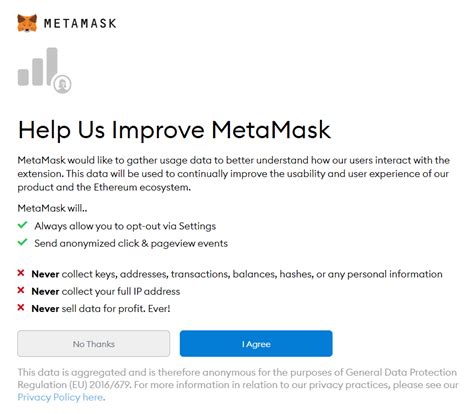The Mystery of MetaMask’s Private Network Restrictions: What’s Going On?
As a user of the popular MetaMask wallet, you’re probably familiar with its ability to deploy contracts and interact with your decentralized applications (dApps) across different networks. However, one feature that has caused frustration for many users is the fact that MetaMask doesn’t allow you to send transactions directly from the private network.
In this article, we’ll take a look at what’s going on behind the scenes and explore possible reasons why MetaMask might be implementing this restriction.
Private Network: What’s the Difference?
Before we dive into the nitty gritty of MetaMask, let’s quickly cover a few basics. The private network is a separate entity from the public Ethereum mainnet (also known as the “mainnet” or simply “Ethereum”). The private network allows users to interact with specific contracts and applications without revealing their IP address or other identifying information.
Why can’t MetaMask send transactions directly?
When you deploy a contract to your private network, it uses the Ethereum Virtual Machine (EVM) running on nodes. However, when you try to send transactions from the private network using MetaMask, the wallet appears to be unable to do so.
Here are some possible reasons for this limitation:
- Gas Fees:

One of the main factors limiting the ability to send transactions is the minimum gas fee. The switch from Proof-of-Work (PoW) consensus to Proof-of-Stake (PoS) in Ethereum 2.0 (also known as Serenity) will significantly affect gas prices. A private network, which is a separate entity with its own PoW or PoS consensus algorithm, can have different pricing structures that affect transaction fees.
- Network Congestion: When you deploy contracts on your private network, they run in parallel with other transactions on the public network. This can lead to congestion and rising gas prices, which can further limit the number of transactions you can send.
- Wallet Configuration: It is possible that MetaMask is misconfigured or has special settings that prevent it from sending transactions directly from the private network.
What can you do?
While these limitations may seem frustrating, there are still ways to get around them:
- Use a Bridge: Bridges allow you to interact with smart contracts on both the main network and private networks without having to send transactions directly.
- Deploy contracts on testnets:
Deploying contracts on public testnets can help you test new ideas and interactions before deploying them on the private network.
- Wait for MetaMask feature updates: As developers continue to improve their wallets, they may support sending transactions directly from the private network.
In summary, understanding what’s happening behind the scenes is key to resolving the issue when MetaMask sends transactions directly from the private network. By exploring the possible causes and taking steps to circumvent these limitations, you can continue to have a seamless experience interacting with smart contracts on both the mainnet and private networks.
** What do you think? Share your experiences and suggestions in the comments below!
Deixe um comentário